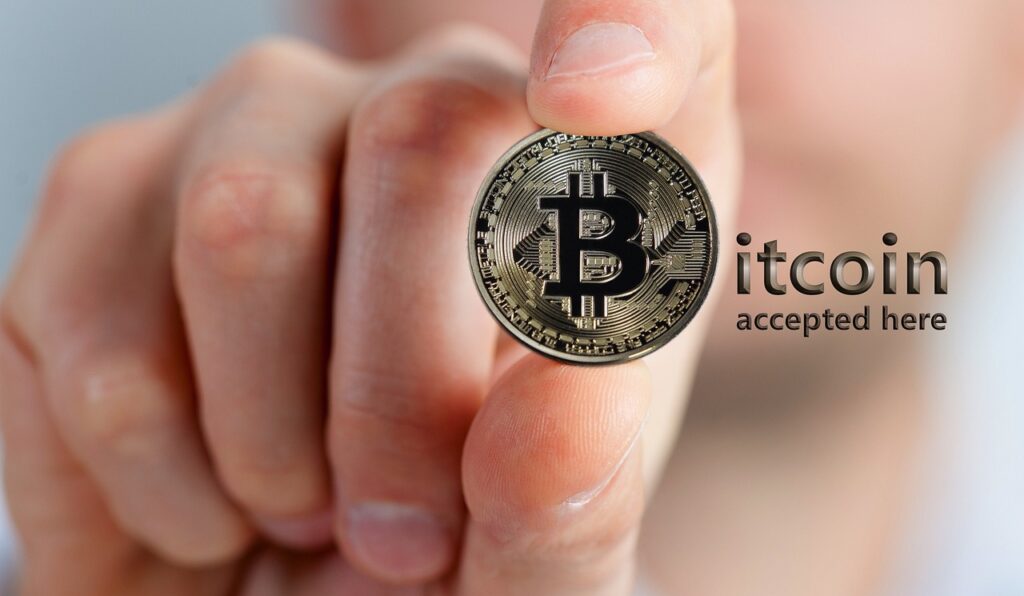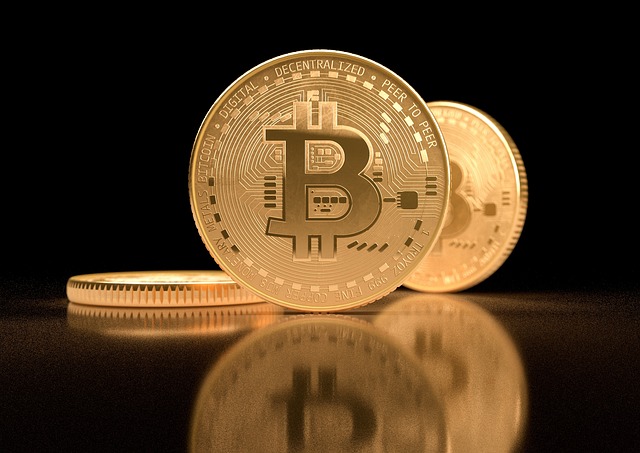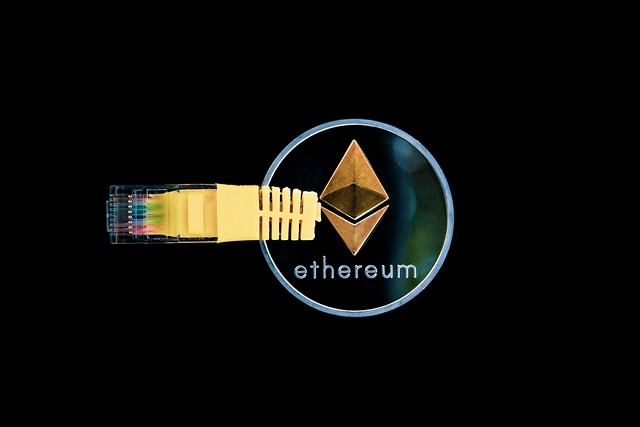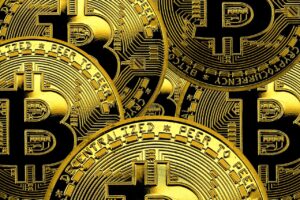Decentralized Finance Architecture Layers: A Closer Look
Decentralized Finance Architecture Layers: A Closer Look

Understanding the Basics: What is Decentralized Finance?
Decentralized Finance, often referred to as DeFi, is a rapidly emerging concept that has taken the world of finance by storm. In its simplest form, DeFi can be understood as the decentralization of traditional financial systems, removing the need for intermediaries such as banks or government institutions. Instead, DeFi utilizes blockchain technology, a decentralized network, to facilitate peer-to-peer transactions and enable individuals to have complete control over their own financial activities.
One of the key principles of DeFi is the concept of trustlessness. Unlike traditional financial systems where trust is placed on centralized institutions, DeFi operates on a trustless system, relying on smart contracts to enforce agreements and eliminate the need for intermediaries. By leveraging blockchain technology, DeFi provides a transparent and secure platform that allows for seamless financial interactions. This has opened up a world of opportunities and possibilities, enabling individuals to access financial services, such as lending, borrowing, and trading, in a decentralized manner.

The Foundation: Exploring the Core Components of DeFi
Decentralized Finance, also known as DeFi, has garnered significant attention in recent years. It represents a paradigm shift in the traditional financial industry, offering new ways for individuals to manage their assets and participate in the global economy. At its core, DeFi encompasses a range of innovative technologies and principles that aim to eliminate intermediaries and promote financial inclusivity.
One of the fundamental components of DeFi is blockchain technology. Built on a peer-to-peer network, these decentralized systems provide a transparent and secure infrastructure for financial transactions. By removing the need for intermediaries such as banks or brokers, blockchain technology allows for direct peer-to-peer interactions, reducing costs and increasing efficiency.

Layer 1: Peer-to-Peer Networks and Blockchain Technology
Peer-to-peer networks and blockchain technology form the very foundation of decentralized finance (DeFi). In simple terms, a peer-to-peer network allows direct communication and interaction between computers or devices without the need for a central authority. This means that transactions and data can be exchanged directly between participants, eliminating the middleman and creating a more efficient and transparent system.
Blockchain technology, on the other hand, serves as the underlying infrastructure for decentralized finance. It is a distributed ledger that keeps a record of all transactions across multiple computers or nodes. Each block of information is linked to the previous block, forming an immutable and transparent chain of data. Through the use of cryptographic algorithms, blockchain ensures the security and integrity of the information stored on the network. This technology enables trustless transactions, where participants can verify and validate each transaction without relying on a third party. Overall, layer 1 provides the necessary building blocks for the decentralized nature of DeFi, paving the way for the layers that follow.
Layer 2: Smart Contracts and Programmable Money
Smart contracts and programmable money are the core elements of Layer 2 in decentralized finance (DeFi). Smart contracts are self-executing agreements with predefined rules and conditions written into code. These contracts allow for the automation of transactions, eliminating the need for intermediaries such as banks or lawyers. With smart contracts, users can create and enforce financial agreements without relying on a centralized authority.
Programmable money, on the other hand, refers to digital assets that can be programmed to perform specific functions or follow predefined rules. These assets can be tokenized representations of real-world assets or native cryptocurrencies. Programmable money enables the creation of complex financial instruments and the automation of various financial processes. It allows for the seamless movement of assets across blockchain networks, facilitating efficient and secure transactions.
With smart contracts and programmable money at the heart of Layer 2, the potential for innovation in decentralized finance is immense. These technologies pave the way for the development of sophisticated financial products, such as decentralized exchanges, lending platforms, and yield farming protocols. As more developers and entrepreneurs explore the possibilities offered by smart contracts and programmable money, the DeFi ecosystem is expected to expand further, offering new opportunities for users to interact with and benefit from decentralized financial services.
Layer 3: Decentralized Exchanges and Liquidity Pools
Decentralized exchanges and liquidity pools play a crucial role in the world of decentralized finance (DeFi). These platforms allow users to trade digital assets directly with each other, without relying on intermediaries such as traditional banks or centralized exchanges. By eliminating the need for intermediaries, decentralized exchanges provide greater transparency, security, and control over one’s funds.
Liquidity pools, on the other hand, are an essential component of decentralized exchanges. They are pools of funds supplied by users who want to provide liquidity to the market. This liquidity enables other users to easily swap between different digital assets, contributing to the overall efficiency and accessibility of the decentralized exchange. By participating in liquidity pools, users can earn rewards in the form of transaction fees and additional digital tokens, incentivizing them to participate in these decentralized finance ecosystems.
Together, decentralized exchanges and liquidity pools are revolutionizing the way people trade and access financial services. They offer a decentralized alternative to traditional financial systems, empowering individuals to have control over their digital assets and participate in a more open and inclusive financial ecosystem. As the DeFi landscape continues to evolve, decentralized exchanges and liquidity pools are likely to play an increasingly significant role in reshaping the global financial landscape.
Layer 4: Stablecoins and Asset-backed Tokens
Stablecoins and asset-backed tokens are key components in the world of decentralized finance. These digital currencies are designed to maintain a stable value, usually by pegging their worth to a reserve of real-world assets such as fiat currencies, commodities, or even other cryptocurrencies. The idea behind stablecoins is to offer stability in an otherwise volatile market, providing users with a reliable medium of exchange and a store of value within the decentralized finance ecosystem.
Asset-backed tokens, on the other hand, are digital representations of real-world assets like real estate, gold, or other valuable commodities. These tokens aim to bring the benefits of blockchain technology to traditional assets, enabling fractional ownership, increased liquidity, and easy transferability. By tokenizing these assets, individuals can gain exposure to previously illiquid investments, opening up new opportunities for investors and creating a more inclusive financial system.
In summary, stablecoins and asset-backed tokens play crucial roles in the decentralized finance landscape. They offer stability, liquidity, and accessibility to users, enabling them to participate in the digital economy without relying solely on traditional fiat currencies. As the adoption of decentralized finance continues to grow, stablecoins and asset-backed tokens are likely to remain pivotal players, bridging the gap between traditional finance and the decentralized world.
Layer 5: Lending and Borrowing Platforms
Lending and borrowing platforms form an integral part of the decentralized finance (DeFi) ecosystem. These platforms provide users with the ability to lend their cryptocurrency assets and earn interest, or borrow assets by putting down collateral. Unlike traditional financial institutions, which often require extensive verification processes and credit checks, DeFi lending and borrowing platforms offer a more accessible and permissionless approach.
One of the key advantages of these platforms is the removal of intermediaries. By leveraging smart contracts and blockchain technology, borrowers can directly borrow from lenders without the need for a middleman. This not only reduces costs but also enhances the speed and efficiency of the lending process. Furthermore, the use of blockchain technology ensures transparency and immutability, providing a high level of trust and security to both borrowers and lenders. As a result, individuals who may have previously been excluded from traditional lending systems now have the opportunity to access capital and meet their financial needs through decentralized lending and borrowing platforms.
• Lending and borrowing platforms are a crucial component of the DeFi ecosystem.
• These platforms allow users to lend their cryptocurrency assets and earn interest, or borrow assets by providing collateral.
• Unlike traditional financial institutions, DeFi lending and borrowing platforms have a more accessible and permissionless approach.
• Intermediaries are eliminated through the use of smart contracts and blockchain technology.
• This reduces costs, speeds up the lending process, and enhances efficiency.
• Blockchain technology ensures transparency and immutability, creating trust and security for both borrowers and lenders.
• Decentralized lending platforms provide opportunities for individuals who were previously excluded from traditional lending systems.
Layer 6: Yield Farming and Staking
Yield farming and staking are two key components of the decentralized finance (DeFi) ecosystem. In this layer, users can earn passive income by providing liquidity to various DeFi protocols. Yield farming involves lending or depositing digital assets into a protocol and earning rewards in return. These rewards can be in the form of additional tokens or a percentage of the transaction fees generated by the protocol. Staking, on the other hand, involves locking up tokens in a proof-of-stake (PoS) network to support its operations and security. In return, stakers receive rewards for their contributions. Both yield farming and staking allow users to make their assets work for them, turning idle coins into potential earnings.
One of the benefits of yield farming and staking is the potential for higher returns compared to traditional savings accounts or investments. By participating in these activities, users can take advantage of the growing DeFi market and potentially earn a higher yield on their assets.

Layer 7: Insurance and Risk Management
Insurance and risk management play a vital role in the decentralized finance (DeFi) ecosystem. As the space continues to grow, so does the need for protection against unforeseen events and potential losses. In DeFi, insurance acts as a safety net that provides users with a layer of security and confidence.
One of the main challenges in DeFi is the risk associated with smart contract vulnerabilities and hacks. Even though smart contracts are designed to be immutable and secure, vulnerabilities can still emerge, leaving users exposed to potential losses. Insurance protocols in DeFi aim to mitigate these risks by providing coverage for smart contract failures or malicious attacks. By purchasing insurance, users can protect their funds and minimize the impact of any potential breaches.
Additionally, risk management is crucial in building a sustainable and resilient DeFi ecosystem. Risk management strategies can vary from project to project, but they generally involve implementing measures to safeguard against market volatility, liquidity risks, and other external factors that may impact the value of assets in DeFi protocols. These risk management practices ensure that users have a better understanding of the possible risks associated with their investments and can make informed decisions. Overall, insurance and risk management are essential components that contribute to the long-term stability and growth of the DeFi landscape.
Layer 8: Governance and Community Involvement
In the world of decentralized finance (DeFi), layer 8 focuses on governance and community involvement. Governance refers to the decision-making processes and structures that govern how a decentralized finance protocol is managed and operated. Unlike traditional financial systems where decisions are made by a centralized authority, DeFi protocols rely on the participation and consensus of the community.
In DeFi, community involvement plays a crucial role in shaping the direction and development of protocols. Participants have the opportunity to contribute their ideas, voice their opinions, and actively vote on important decisions. This democratic approach not only fosters transparency and inclusivity but also empowers individuals to have a say in the evolution of DeFi. By actively engaging in governance and community discussions, users can help shape the rules and policies that govern DeFi protocols, ultimately contributing to a more equitable and efficient financial ecosystem.
What is governance in the context of decentralized finance (DeFi)?
Governance in DeFi refers to the decision-making process within a decentralized protocol or platform. It involves the participation of token holders or community members who have the power to vote on proposals and influence the direction of the project.
Why is governance important in DeFi?
Governance is crucial in DeFi because it allows the community to have a say in how a protocol or platform is managed and developed. It ensures that decisions are made collectively and transparently, promoting fairness and preventing centralized control.
How do participants in DeFi governance make decisions?
Participants in DeFi governance typically use their voting power to make decisions. Each participant’s voting power is often proportional to the number of tokens they hold. Proposals are put forward, and token holders can vote either for or against them.
What is community involvement in DeFi?
Community involvement in DeFi refers to the active participation of users and stakeholders in the development and improvement of decentralized finance projects. This can include providing feedback, suggesting improvements, reporting bugs, and contributing to the overall growth of the community.
How can I get involved in the governance of a DeFi project?
To get involved in the governance of a DeFi project, you usually need to hold a certain amount of the project’s tokens. By doing so, you can participate in voting and decision-making processes. Additionally, actively engaging with the community and contributing your ideas and expertise can also increase your involvement.
What benefits does community involvement bring to DeFi projects?
Community involvement brings several benefits to DeFi projects. It fosters a sense of ownership and belonging among participants, encourages innovation and collaboration, and helps in identifying and addressing any issues or vulnerabilities in the system. It also enhances transparency and can lead to more robust and sustainable protocols.
Can I earn rewards for participating in the governance of a DeFi project?
Yes, some DeFi projects offer rewards to participants who actively engage in governance. These rewards can come in the form of additional tokens, governance tokens, or other incentives as a way to encourage community involvement and participation.
What risks should I be aware of when participating in DeFi governance?
When participating in DeFi governance, it’s important to be aware of potential risks, such as the loss of value in the project’s tokens, governance attacks, or manipulation by large token holders. It’s crucial to do thorough research, understand the project’s governance mechanisms, and assess the potential risks before getting involved.
Can I contribute to the governance of multiple DeFi projects at the same time?
Yes, it is possible to contribute to the governance of multiple DeFi projects simultaneously. However, it’s important to keep in mind that active participation in governance requires time and effort. It’s advisable to prioritize your involvement based on your interests and the impact you can make in each project.
Todays Featured Product:
Buy, exchange and grow your crypto securely with a Ledger hardware wallet, combined with the Ledger Live app. It’s never been easier to keep your crypto safe and accessible. Buy direct from Ledger.com and get todays Special Offers Here.




